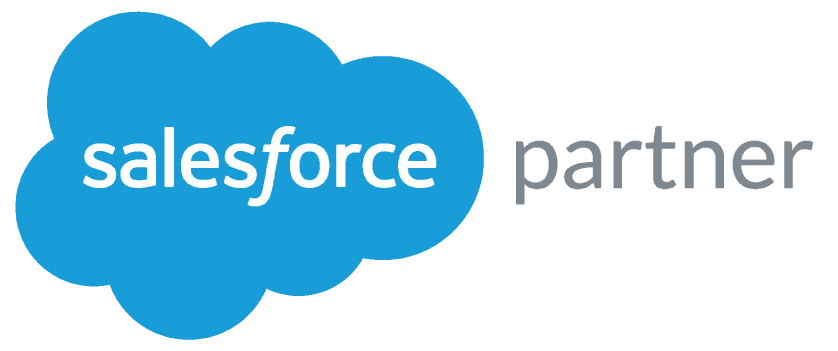[ez-toc]
This pandemic prompted many employers to shift to a remote work model in a bid to limit the spread of the virus, however, most businesses still managed to thrive due to advancements in communication and teleworking technology.
With the right remote work software and mobile work tools, the transition to managing a remote workforce can be a seamless process. Find out how this crisis has altered our mindset about office technology and productivity while working in the comfort of our homes in this new research.
-LSI Media
The recent COVID-19 pandemic has changed how we think about a lot of things. From the size of our weddings and special events to the comfort level of our pajamas and stay-at-home clothes, we’ve reconsidered the size, shape, and necessity of many, many elements in our lives. Work is one of these elements, if not the main one. We’ve asked ourselves (and our employers) questions like:
- “Can I get as much done at home as I would in the office?”
- “How do I stay connected to my team if we’re all remote?”, and
- “Is it really necessary to have as many meetings as I did before?”
While we’ve all found different answers to these questions, one thing is consistent: COVID-19 has forced us to learn how to stay connected, motivated, and productive in new ways.
Canva + HubSpot Marketing Survey
In October, we teamed up with Canva to better understand how the COVID-19 pandemic has affected marketing leaders, their resources, and their teams. We surveyed 502 marketing leaders (mostly senior-level marketing managers, directors, VPs, and CMOS) from across the United States and asked them how COVID-19 has affected their teams, processes, and priorities. The results are in, and our findings are pointing towards a new way of thinking about work — especially the tools and technologies we use to get stuff done.
How COVID-19 Changed the Way We Think and Use Office Technology
It’s no surprise that the COVID-19 pandemic has massively impacted where we now work. Out of 500+ marketing leaders, 73% reported that they’ve been working remotely for over three months. This will likely be the “new normal” for some. A recent Gartner poll revealed that 48% of employees will likely work remotely at least part of the time after COVID-19, versus 30% doing so before the pandemic.
But COVID-19 hasn’t just affected where we work — it has also changed how we work. Many of the respondents reported new challenges in their day-to-day projects and processes:
- Decision-making: Over 50% agreed that their team’s ability to make decisions has been negatively impacted.
- Planning: 72% agreed that their planning process has been more difficult, and over 70% have seen their planning framework dramatically change with the impact of COVID.
- Feedback: Over 70% agreed that it’s become more difficult to give and receive effective feedback while working remotely.
- Productivity: Over 66% agreed that their team’s productivity has dropped, and nearly 50% said they’ve struggled to motivate their teams.
If you resonate with these findings, you’re not alone. It’s clear that COVID-19 has been tough all around, regardless of your team size or industry. Let’s unpack some more detailed trends — and potentially permanent changes — we’re seeing as a result of the COVID-19 pandemic. Some organizations are outsourcing more marketing projects.
Gartner found that the COVID-19 pandemic has led 32% of organizations to replace full-time employees with contingent workers and contractors. Why might this be? For one, outsourcing is a common cost-saving measure. It can also help meet demand. 50% of respondents reported that it’s been more difficult for their teams to come up with creative content — perhaps outsourcing projects like content marketing and design has helped teams maintain their production cadence during times of stress and burnout (which we’ll explain below).
However, hiring contractors and external agency services requires increased communication and collaboration. Gone are the days when we could walk across the hall for a chat at a co-worker’s desk or host in-person meetings with agencies.
During the pandemic, we’ve learned to replace these conversations with quick messages or video calls — most likely using a tool like Slack or Zoom. Our respondents would agree. 75% reported that instant messaging platforms like Slack were “good” and “exceptional” at supporting collaboration. 72% rated the same for the level of usability of these tools.
If companies and teams weren’t using an instant messaging platform before the pandemic, it’s highly likely that they are now. The need for a tool like this also arises when outsourcing projects. It’s more important than ever to stay aligned — especially when working with third-party contractors.
For those keeping marketing in-house, new tools are needed. You’ll see in the table above that many of our survey respondents still reported keeping or shifting many resources in-house. This could also be in an effort to save money and meet demand — by using new tools and technologies to compensate for a lack of labor.
For example, 44% of respondents reported that their need for new visual assets and graphic design has increased since the start of the pandemic. 39% reported the demand has mostly stayed the same. Regardless, this is a vast majority of marketers who need to maintain or boost their graphic design production — in the middle of a pandemic, no less.
A similar number of respondents (38%) reported that their graphic design software did a “neutral,” “poor,” or “terrible” job of supporting collaboration within their team. This presents a unique opportunity to use office technology and tools like Canva — to support increased customer demand while saving costs and supporting remote collaboration.
Another set of respondents (50%) reported seeing traffic to their website increase and the need for regular updates also increase. Our study also revealed that 16% of marketers find the usability and collaboration of their website content management system (CMS) either “neutral,” “poor,” or “terrible.”
For those keeping website management in-house, incorporating a tool like HubSpot CMS can vastly improve your team’s remote collaboration and productivity — all while meeting the increased demand from your customers (which is a good thing!). Organizations are using technology to monitor and support employees.
We’ve confirmed so far that marketing teams have been pressed for productivity and collaboration while being asked to create more creative content to meet customer needs, and employer demand — all in an ever-changing, pandemic-soaked market. While office technology has never been more critical, neither has recognized and acknowledged the barriers COVID-19 has created, such as an increased team workload and employee burnout (17%).
This rise in employee burnout has led to more discussion around the responsibility of employers to their staff. A Deloitte study found that, as the “pandemic has put more hours into the working day,” organizations should do more than just foster open dialogue and open practices around well-being. Gartner agrees — they theorize that COVID-19 has expanded employee expectations of their employer as a “social safety net.”
Technology has come in handy for non-work-related needs, too. Zoom has equipped teams to host online happy hours, virtual holiday parties, and even team-building activities. Companies are also sponsoring free telehealth and virtual therapy sessions. Gartner also found that, in a less digital sense, employers are also offering “support including enhanced sick leave, financial assistance, adjusted hours of operation, and child care provisions.”
The COVID-19 pandemic has changed how employers use office technology to understand not only the employee experience but also remote employee performance. A Gartner study found that 16% of employers are using tools to monitor employees through virtual clocking in and out, tracking work computer usage, and observing employee emails or internal communications. This trend started well before the pandemic, but it will continue to grow in popularity as more folks opt to permanently work remotely.
Over to You
COVID-19 has undoubtedly changed the way we think about office technology. The pandemic has forced businesses around the world to adapt and implement new technologies to facilitate remote work and ensure the safety of employees. As a result, we have witnessed a rapid acceleration and acceptance of various digital tools and platforms.
From video conferencing solutions to project management software, companies have had to invest in and rely heavily on these tools to remain productive and connected during the pandemic. Furthermore, the crisis has highlighted the importance of reliable and secure office technology, as organizations face increased cyber threats and data breaches. This has led to a greater emphasis on cybersecurity measures and the implementation of robust IT infrastructure.
In addition, COVID-19 has also brought to light the need for enhanced collaboration tools and software that can facilitate effective remote teamwork and communication. As businesses continue to navigate the challenges posed by this global health crisis, it is likely that the way we think about office technology will continue to evolve.
The pandemic has served as a catalyst for innovation and has pushed companies to embrace digital transformation to a greater degree than ever before. In the post-pandemic era, office technology will play a crucial role in shaping the way we work and collaborate, ensuring efficiency, flexibility, and resilience in the face of future challenges.
As large and difficult as these COVID-19 shifts have been, for the time being, they are here to stay. Listen to these emerging trends and invest in new processes, tools, and technology in 2021. Doing so will help you combat these challenges and better motivate, monitor, and equip your remote teams. Remember, it’s your responsibility to help them be productive at home, stay connected to their teams, and make room for how the pandemic is affecting their personal lives, too. Via How COVID-19 Changed the Way We Think About Office Technology [New Research]
FAQs:
1. How has COVID-19 impacted the way we think about office technology?
The COVID-19 pandemic has dramatically shifted the way we perceive and utilize office technology. With the sudden transition to remote work, companies were forced to rely heavily on technologies such as video conferencing platforms, cloud-based collaboration tools, and project management software to ensure business continuity.
2. What are some specific changes in office technology adoption due to COVID-19?
The widespread adoption of video conferencing platforms, such as Zoom and Microsoft Teams, has been one of the most significant changes. These tools have become essential for virtual meetings, conferences, and other collaborative activities. Additionally, cloud-based software and document management systems are being utilized to enable remote access to work files and facilitate seamless collaboration.
3. How has the pandemic influenced the importance of cybersecurity in office technology?
The COVID-19 crisis has highlighted the critical role of cybersecurity in remote work environments. As employees connect to company networks from various locations, security measures such as secure VPN connections, multi-factor authentication, and data encryption have become paramount to protect sensitive information from potential cyber threats.
4. What impact has COVID-19 had on the digital transformation of businesses?
The pandemic has acted as a catalyst for digital transformation, compelling businesses to accelerate their adoption of new technologies. Organizations have quickly implemented tools and systems to facilitate remote work, streamline communication, and enhance productivity. This shift has allowed companies to become more agile and flexible in handling unforeseen disruptions.
5. Has COVID-19 accelerated the transition to paperless offices?
COVID-19 has certainly accelerated the transition to paperless offices. With remote work becoming the new norm, businesses have increasingly relied on digital methods for document creation, storage, and sharing. This includes electronic signatures, document collaboration platforms, and cloud storage solutions, reducing the dependence on physical paperwork.
6. Are there any new emerging technologies that have gained popularity during the pandemic?
Yes, several emerging technologies have gained popularity as a result of the pandemic. Artificial intelligence (AI) and machine learning (ML) tools are being leveraged to analyze large datasets and automate processes. Virtual reality (VR) and augmented reality (AR) technologies have also found applications in remote training and virtual collaboration, providing immersive experiences without physical presence.





















